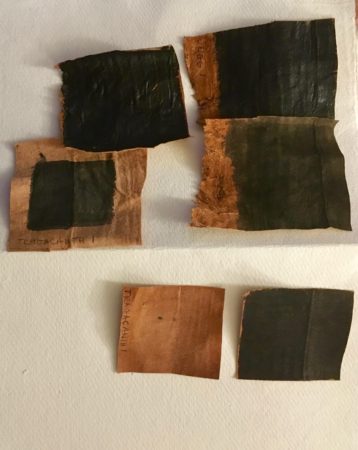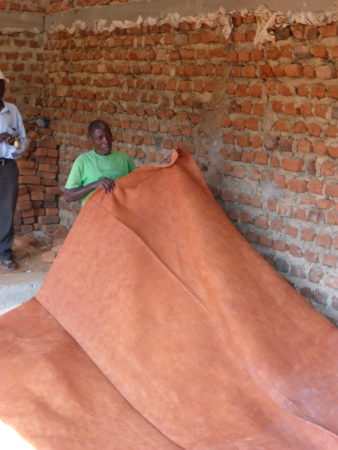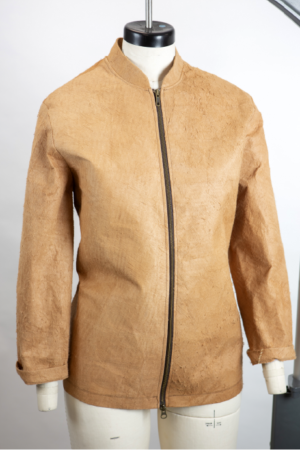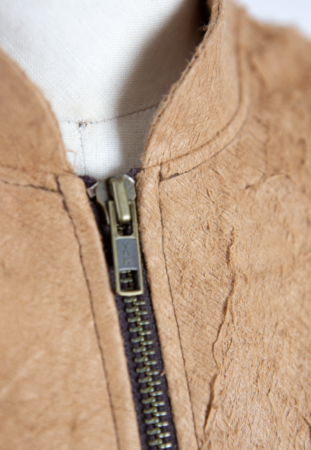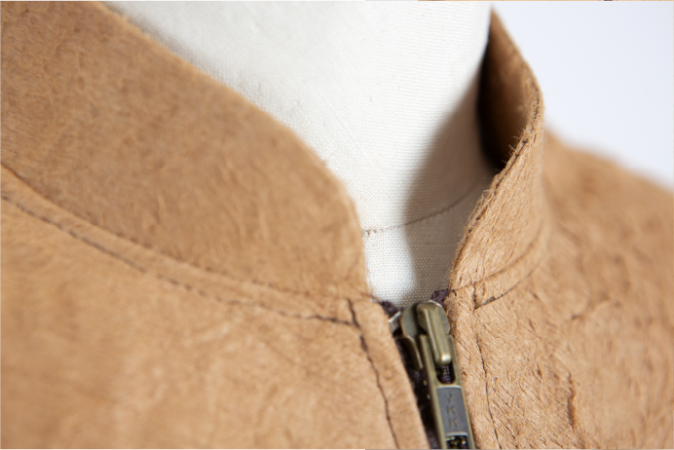Ugandan Bark cloth as craft based eco-fashion and its potential in healthcare
Dr Prabhuraj Venkatraman
An interdisciplinary research team evaluated the performance and the use of Ugandan bark cloth recognised by UNESCO. This research investigated bark cloth’s potential as an eco-fashion fabric and addresses some of the practical and aesthetic – garment making considerations. The project is ongoing research and has plans to explore its potential toward the health benefits of wearing bark cloth and establish evidence from user perception using wearer trials. Recently, the study demonstrated the antimicrobial efficacy of bark cloth against MRSA. Utilising bark cloth in eco-fashion will undoubtedly reduce the impact on the environment as bark cloth can be used without significant finishing or processing. A gradual and sustainable increase in the use of bark cloth as eco-fashion textile will help to re-vitalise Ugandan craft and develop the community. The research had demonstrated that the ancient art of making bark cloth, which is currently at the brink of extinction, can be safeguarded through its use of eco-friendly and sustainable fashion.
Project Lead
Dr Prabhuraj Venkatraman
Senior Lecturer (Textile Technology)
Project Researchers
Dr. Kirsten Scott and Karen Spurgin from Istituto of Marangoni, London
Dr Jonathan Butler, Department of Life Sciences, Faculty of Science and Engineering, Manchester Metropolitan University
Images from Photographer Richard Kelly
Outputs
Outputs range from conference and symposium discussion, as well as journal papers.
Venkatraman, P.D. and Scott, K., (2018), Investigation of bark cloth for its surface texture and durability for apparel applications, Presented at the 91st Textile Institute World Conference, University of Leeds, U.K. 23-24th July 2018.
Venkatraman, P.D. Scott, K and Liau C.M. (2020) Environmentally friendly and sustainable bark cloth for garment applications: Evaluation of fabric properties and apparel development, Sustainable Materials and Technology, Vol. 23, April 2020 e00136, https://doi.org/10.1016/j.susmat.2019.e00136
https://www2.mmu.ac.uk/news-and-events/news/story/11687/
Research was disseminated at a recent ‘Sustainable Materials’ seminar held at Midland Hotel, Manchester organised by Advanced Materials and Surface Engineering Centre, MMU, Dec 2019, and was well received by peers prompting many enthusiasts to foresee its application across diverse fields.
Butler J.A, Slate A.J, Todd D.B., Airton D., Hardman M., Scott K., and Venkatraman P.D. (2020) A traditional Ugandan Ficus natalensis bark cloth exhibits antimicrobial activity against Methicillin-Resistant Staphylococcus aureus, Journal of Applied Microbiology, The Society for Applied Microbiology, https://doi.org/10.1111/jam.14945
Scott, K., Venkatraman P.D., Butler, J., and Spurgin K. (2021) “Restorative fashion: the healing powers of the mutuba tree” presented at a symposium titled Curative Things: Medicine / Fashion / Art – organised by Fashion Research Network, Leeds Arts University, U.K., on 12th Feb 2021.
Impact
A multi-disciplinary group of researchers, artists, environmentalists and fashion practitioners in the UK and Uganda are investigating, uncovering, and developing the full potential of a radically indigenous and endangered textile: Ugandan bark cloth, produced from the mutuba tree and part of the Intangible Cultural Heritage of Humanity.
Our research methods include fieldwork in Uganda:
- observation, interviews with artisans, community groups and local environmentalists, the documentation of traditional skills and processes associated with bark cloth production, ethnobotany, and agro-forestry
- aesthetic experimentation
- natural dye experiments,
- the development and testing of a biophilic design strategy.
Bark cloth in its raw form is stiff, possesses thick and thin places and has limited strength. Our recent exploration involved fusing bark cloth with cotton interfacing to enhance drape, texture, handle, and strength—garments developed with fused bark cloth offered good drape, shape, and fit on a mannequin. Bark cloth was also subjected to CO2 laser patterning and sublimation printing to incorporate surface patterns. The research demonstrated the potential of the Ugandan bark cloth in small-scale eco-fashion.
A collaborative study between the University’s researchers from the Faculty of Science and Engineering, Manchester Fashion Institute and Istituto Marangoni (London) found that the bark cloth retained its antimicrobial properties against MRSA (Methicillin‐Resistant Staphylococcus aureus) after standard washing procedures, which is one of the biggest challenges for antimicrobial fabric production.
Ugandan bark cloth is a nonwoven fibrous structure harvested from the Mutuba tree in Uganda. It has a distinct texture with the criss-cross arrangement of fibres that has a porous structure, varied thickness, and high moisture absorbency. These properties make it ideal for medical applications such as wound dressing that supports the moist wound healing concept’.
Funding
The project was supported with the internal QR funding from research cluster at Manchester Fashion Institute via MSARC for conference dissemination as well as for analysis of materials.

